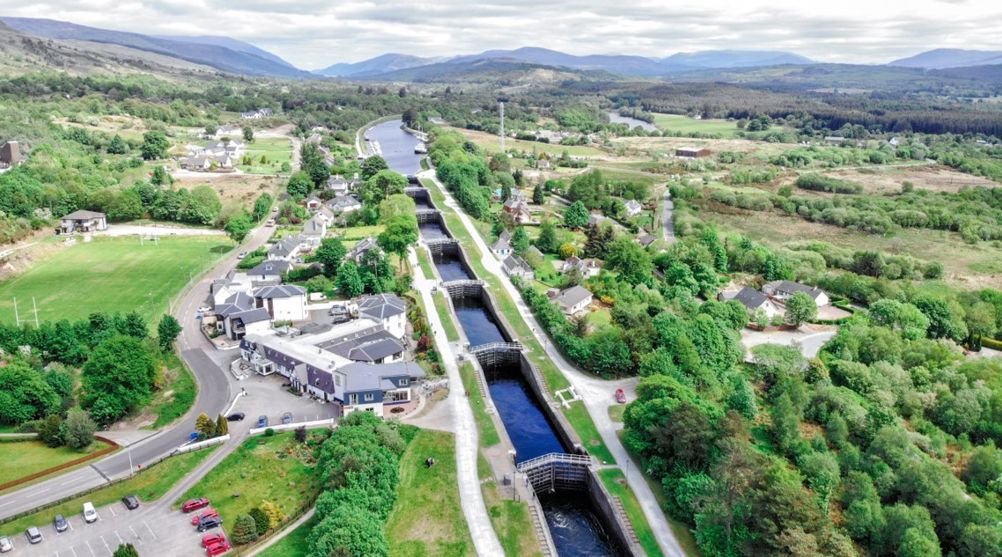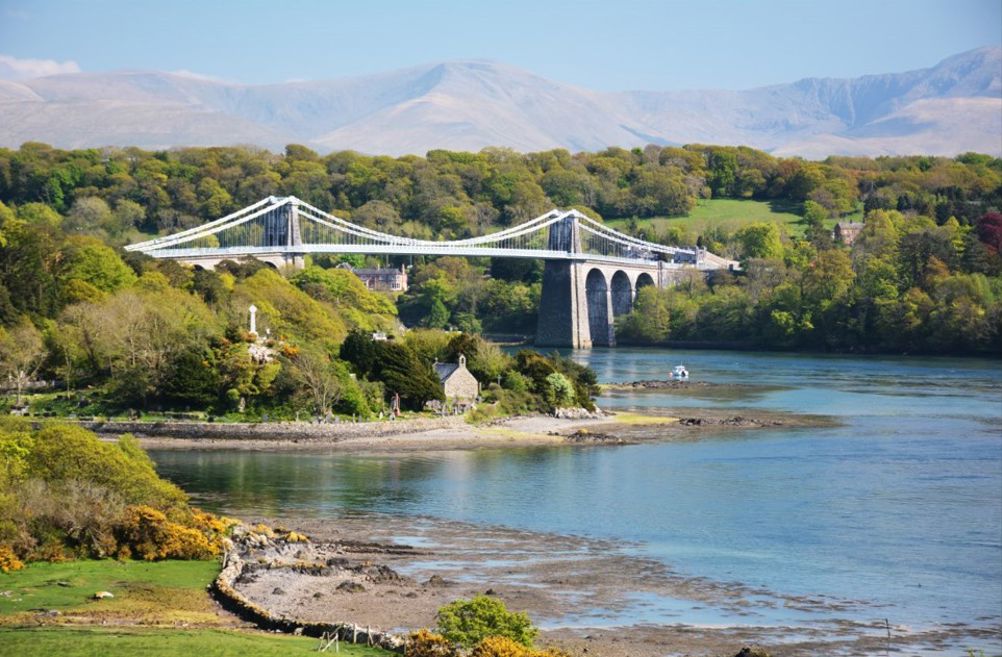In February 1835 the Monthly Notices of the Astronomical Society regretted the death of one of its earliest members, “Thomas Telford, Esq., the President of the Society of Civil Engineers”. Although his obituary appears on the same page as a warning of membership suspension for subscription defaulters, there remains a dignified air of Georgian rhetoric in the announcement. In only eight lines, despite the obituarist claiming that Telford’s talents were “too well known to need any encomium in this place”, we read that the Scottish civil engineer’s works are “so numerous all over this country (as it has been justly observed) there is scarcely a county in England, Scotland or Wales, in which they may not be seen.”
The piece continues by remarking that Telford’s bridges and canals, harbours and tunnels, roads and railways “may be regarded as imperishable monuments to the powerful resources of his mind.” It was a mind that also extended to writing verse, but in this effort he was eclipsed by his friend Poet Laureate Robert Southey, who invested the engineer –who completed the ancient Roman road known as Watling Street (now called the A5) – with the honorific ‘Colossus of Roads.’ Not many towns get to become named after engineers, but Telford in Shropshire – the ‘birthplace of industry’ – is dedicated to the man who not only spent most of his life there, but is responsible for much of the 19th century road, canal and rail infrastructure that passes through the surrounding countryside.
Thomas Telford was born in 1757 on a hill farm in Eskdale, Dumfriesshire. The son of a shepherd, he was raised in poverty, attending the local school at Westerkirk before being apprenticed to a stonemason at the age of 14. Despite the hardship of living in rural Scotland under an economy blighted by the Seven Years War, and despite being raised without his father who died shortly after he was born, he grew up according to what few accounts there are of Telford’s youth ‘full of fun and humour’. In his Lives of the Engineers, Vol. 3, History of Roads (1862) the often-unreliable Samuel Smiles credits Telford with such merriment and gaiety that he was universally known as ‘laughing Tam’.
I am not contented unless I can reason on every particular
Thomas Telford (1757-1834)
While working as a mason in Scotland, Telford extended his education by borrowing books from the elderly Miss Pasley of Craig, notably of poetry (some biographers claim the first literature he read was Milton’s biblical epic poem Paradise Lost) and architecture. By the late 1770s he was himself a published poet writing sentimental verse on such subjects as the death of Robert Burns. But his passion for architecture drove him to London in 1782 to seek better paid employment (through introductions made by the Pasley family), that included work on extensions to Somerset House. Five years on, under the patronage of Sir William Pultney – reputedly the richest man in Britain whose fortune was made speculating on transatlantic slave plantations – Telford was commissioned to supervise the restoration of Shrewsbury Castle. Pultney also had a hand in Telford’s appointment as Surveyor of Public Works for Shropshire in which post Telford started his career designing iron bridges.

Telford lived in and practised from Shrewsbury Castle for many years, working on local hospitals and churches as well as street improvements and drainage. When Pultney became director of the British Fisheries Society, Telford became involved with redeveloping numerous Scottish harbours and settlements. But it was in 1793 that Telford’s career took a turn that would lead him to public renown as a civil engineer, when he was appointed ‘General Agent, Surveyor, Engineer, Architect and Overlooker’ on the 68-mile Ellesmere Canal that links the rivers Mersey, Dee and Severn. One of the key engineering features of the waterway is the 18-arch stone and iron Pontcysyllte Aqueduct that Telford designed under the supervision of legendary civil engineer William Jessop. Innovations developed for the construction of the aqueduct included troughs made from cast iron plates sealed with boiled sugar. The aqueduct was inscribed on the UNESCO World Heritage List in 2009.
Again working with Pultney’s backing, in 1801 Telford devised a schedule to improve transport communications in the Highlands of Scotland, a two-decade project that featured the creation of the Caledonian Canal along the Great Glen. The technological significance of the canal is emphasised in Telford’s Oxford Dictionary of National Biography entry, which states: “In engineering terms the 100 ft wide ship canal, with its twenty-eight huge locks and deep summit cutting at Laggan, was then the most advanced in the world. In making it, innovation abounded in the use of iron railways, machinery, equipment, steam engines for pumping and dredging, and in lock construction, notably at Beauly where a 55 ft depth of mud was preconsolidated before excavating the lock-pit.” With Telford’s stock as an expert canal fabricator on the rise, in 1806 the King of Sweden consulted him on the initial designs for the Göta Canal linking Gothenburg with Stockholm. As one biographer observes, at this time many of Telford’s projects were executed in fulfilment of his role “as a member of the Exchequer Bill Loan Commission, an organ set up under the Poor Employment Act of 1817, to help finance public work projects that would generate employment.”
Telford also worked on more than a thousand miles of new roads, countless new bridges, numerous harbour improvements as well as 32 new churches and manses. These upgrades in transport infrastructure made Scotland north of the Great Glen more accessible, leading Telford to declare that he had advanced the country by ‘at least a century’. Not only that, his highways were also a quality shift on those of other roadbuilders such as John McAdam – who provides the linguistic origins of the colloquial term ‘tarmac’ for asphalt – in that they were better drained and with stone foundations beneath the road metal layer. Telford also paid detailed attention to evolving better lines and gradients that, while increasing initial costs, assisted with traction and the reduction of ongoing maintenance. Politician and pamphleteer Sir Henry Parnell considered Telford’s Holyhead Road to be “a model of the most perfect road making that has ever been attempted in any country”, while the Engineer magazine described it as “a long-lasting memorial to Telford’s skill and vision.”

During his career Telford designed, built or advised on thousands of bridges ranging from simple culverts to the sophistication of the 150ft single span stone arch Over Bridge (also known as Telford’s Bridge) that crosses the River Severn near Gloucester, and is now in the guardianship of Historic England as a scheduled ancient monument. His greatest design perhaps – a replacement for London Bridge – went unbuilt. Telford’s proposal for a 600ft cast iron arch over the River Thames dedicated to George III was seriously considered for many years before being rejected, as reported in the Engineer, due to “the unprecedented scale of the project, coupled with lack of knowledge of and agreement on the technical factors involved”. However, a bridge of similar scale was constructed in the early 19th century. The world’s first of its kind, the 580ft wrought-iron Menai Suspension Bridge on the London-Holyhead Trunk Road (A5) was completed in 1826 and carries road traffic to this day. In the 21st century it has been recognised by the Institution of Civil Engineers and American Society of Civil Engineers as an international landmark. The bridge’s significance went beyond the aesthetic of its elegant lines, leading to “a surge in suspension bridge building and exercised a fundamental influence on the practice and development of I. K. Brunel, J. L. Clark, J. M. Rendel, and others between 1818 and 1840, establishing this type of bridge in its true role as the most economic means of achieving the largest spans.”
Thomas Telford died in 1834 of what his clerk George Turnbull (who would become the “first railway engineer of India”) as a ‘bilious derangement’, now thought to be liver disease. Turnbull also played a role in ensuring that his employer was buried in Westminster Abbey. Close to his grave, in the Chapel of St Andrew, there is a larger-than-life white marble statue of Telford sporting tailcoat and Neronian curls, holding a pair of dividers in his right hand, his left resting on two books: Civil Architecture and Inland Navigation – Bridges. The inscription reads in part that his “noblest monuments are to be found amongst the great public works of this country. The orphan son of a shepherd, self educated, he raised himself by his extraordinary talents and integrity from the humble condition of an operative mason, and became one of the most eminent civil engineers of the age.”











McMurtry Spéirling defies gravity using fan downforce
Ground effect fans were banned from competitive motorsport from the end of the 1978 season following the introduction of Gordon Murray's Brabham...